“Light Pavilion” project will present Yang Guangnan’s solo exhibition “Dyspepsia” as its fourth episode. Here “dyspepsia”, or “indigestion”, a high frequency word in everyday life, is not only removed intentionally from quotidian to an art exhibition which can be seen as exception of the domain of everyday practice, but also unveiled and transformed on a higher degree in this new context parallel to our reality. This word, which in most cases refers to individual and physiological disorder, usually connected with certain pathological changes. While denoting organic or functional orders, it also includes a series of body reactions and perception, such as stomachache, flatulence, stagnation and congestion, or popularly referred to as “getting blocked”... In special circumstances, however, it can also be used to imply a kind of social or mass symptom, therefore introducing and transplanting this natural/physiological phenomenon into the artificial/language/symbolic meaning world.
Then how does the transition process take place? Within an exhibition space which is a little more than 50㎡, Yang placed three installation (sets), all recently finished and corresponding to one another not in terms of form. “The Form of Silence”, the largest one, is asperity iron geometries that take up the entire wall in the western part of the hall. The blocks and surfaces intervene symmetrically, forming an abstract and simple style, exposing the unpolished surface of the metal. To such a relatively compact hall, it is impossible to “digest” this set of geometries. By no means glaring, the installation, with its body that is hard to grasp and concretize, occupies the space already limited, or even, within the limit of meaning generation, they are like some barriers of unknown origin, nodules that disturb the nerves, or a stone difficult to remove in an internal organ. We can neither “read” them nor “see” them in the proper way. Like obstinate adherents of a former dynasty in the empire of signs, they are not to be driven away or communicated with, so the physiological system in the empire gets so disrupted that a language’s privilege suffer from “indigestion” here. These geometries, ordered and silent, seem to be left from the Iron Age, produced in mass, abandoned and left mottled in gloom. The monumental volume and order mark a bygone era that valued volume, weight and hardness as eternal symbols and lofty ideals, just like the Pyramids and obelisks. In contrast, our age prefers the light, the handy, the entertaining, and the portable. What makes up our world is not matter but information, something fluid. In a world that is accustomed to the light, the unsubstantial and the fluid, the stuff here, heavy, orderly, and reduplicative, is like a newly excavated archaeological site whose air and information are nothing less than an indigestible hard core to people with our sense of time and space.
Opposite to “The Form of Silence” is “Stone”, six resin square slabs on the wall. Metal filings or bars are polished manually to inserted into the resin to fit the texture, leaving the light-colored smooth surface clustered with black curls or fracture surfaces. For anyone, fetishists excluded, the odd stuff here, spreading on the resin so densely like filings or hair, may lead to uneasiness, but we still need a lot more to explain clearly what it is. Between the two installations face to face with each other, we find coiling black wires connecting five incandescent bulbs that lighten and darken alternately, as if they were breathing steadily. The artist named it “Dormancy”. The incessant interruption to artificial lighting is also a kind of disorder, or “malfunction”, but it is a vitalizing force from the outside. Measured and bound by the grids of order, an object has its life trapped under its material surface. However, under some circumstance where some external force can stir or invade the social and cultural programs and split them, then, the object’s halo, its soul, can go a step further and reveal what lies under “dyspepsia”, so that we can hear its voice of silence.
Yang Guangnan was born in Hebei in 1980. She is graduated from the sculpture department of China Academy of Art with B.A degree in 2006, and from Central Academy of Fine Arts with MA in sculpture. Currently works and lives in Beijing.
| Light Pavilion Project |
As a site for individual project, “Light Pavilion” is initiated in 2012, based on the second floor of Taikang Space. It aims at providing a flexible platform for artists to realize their ambitions. After an interval of two years, “Light Pavilion” is restarted in 2016, embracing a vision always open to uncertainty, complicity and detournement. It’s not only a site for sensational immersion and experiential evocation but also a forum dedicated to diversity and otherness.
*Exhibition poster and press release:
 Exhibition poster
Exhibition poster Press release
Press release
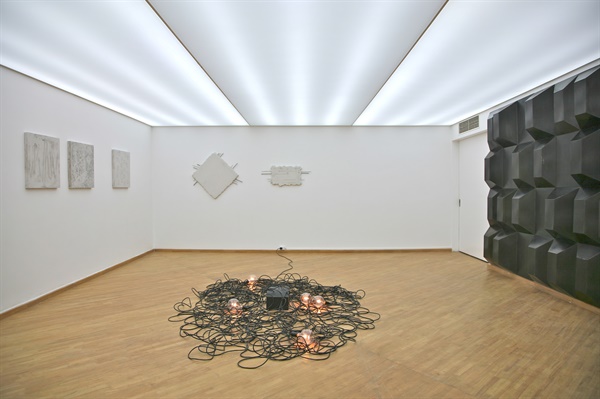 Installation View
Installation View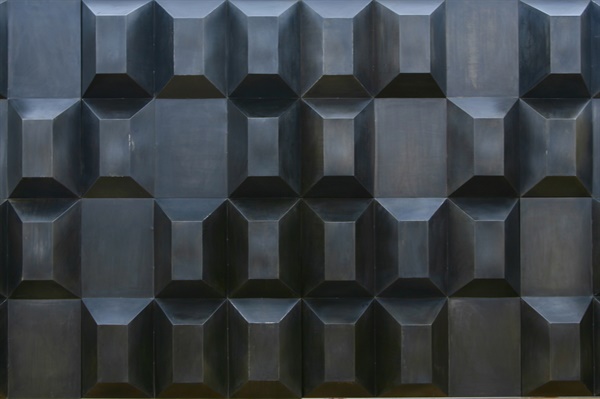 The Form of Silence, 2016, iron, dimension variable
The Form of Silence, 2016, iron, dimension variable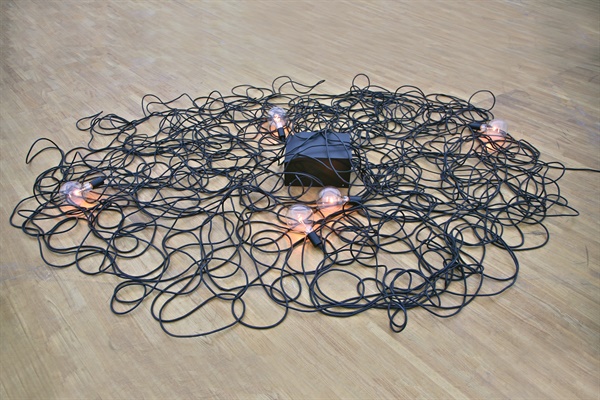 Dormancy, 2016, motor, metal, lights, dimension variable
Dormancy, 2016, motor, metal, lights, dimension variable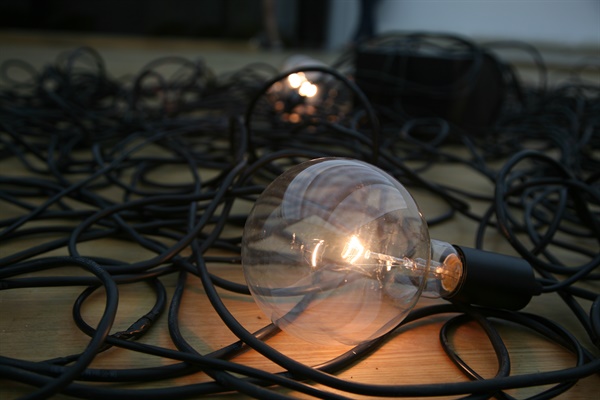 Dormancy, 2016, motor, metal, lights, dimension variable
Dormancy, 2016, motor, metal, lights, dimension variable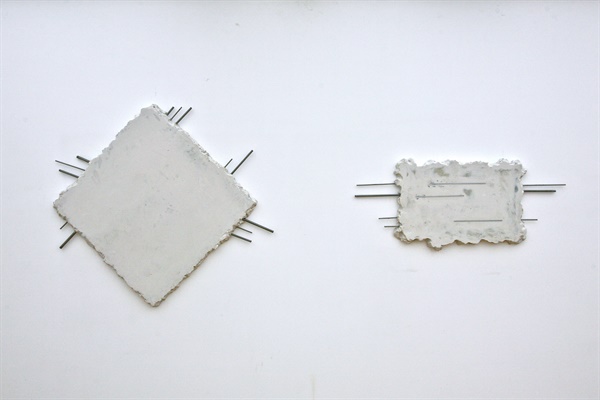 Stones, 2016, resin, metal, approx. 60 x 4 x 60cm x 6
Stones, 2016, resin, metal, approx. 60 x 4 x 60cm x 6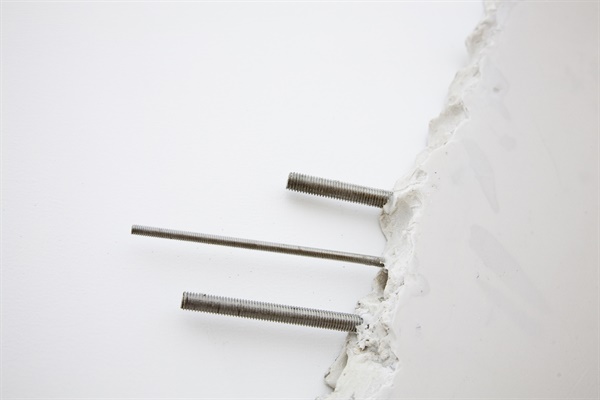 Stones, 2016, resin, metal, approx. 60 x 4 x 60cm x 6, detail
Stones, 2016, resin, metal, approx. 60 x 4 x 60cm x 6, detail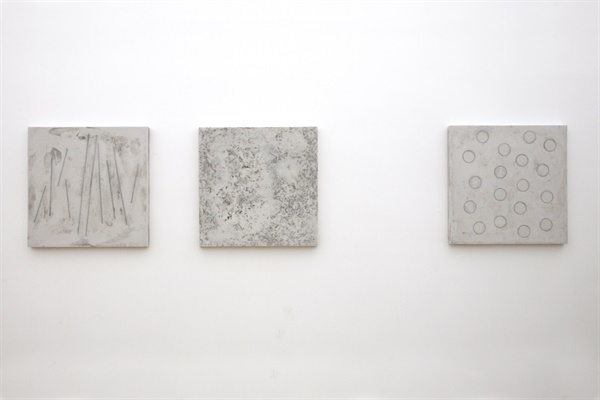 Stones, 2016, resin, metal, approx. 60 x 4 x 60cm x 6
Stones, 2016, resin, metal, approx. 60 x 4 x 60cm x 6





